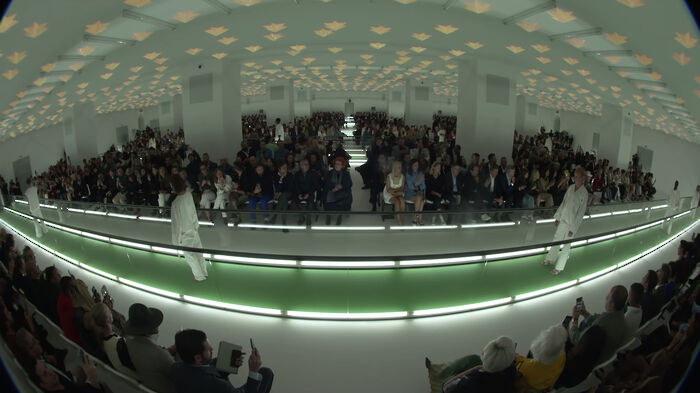Costume and Nudity in Dada Masilo’s Giselle
Dada Masilo’s version of the classical ballet is a brilliant example of how costume, or lack thereof, can be used to reinvent a narrative and bring out aspects that were previously subdued
Fashion doesn’t only have the function of dressing us in our day-to-day lives. It has the power of visually changing the body, and a lot can be told through the way fashion is used. Performance-based art forms frequently use costume to enhance the messages they put across, as it provides another, distinctly visual layer to what’s happening overall. Dada Masilo’s Giselle does that brilliantly.
Masilo’s production is raw and visceral. The South African choreographer, who also dances the main part, reinvented this traditional ballet and made it contemporary. Apart from formal innovations, such as combining classical dance moves with contemporary ones and traditional Tswana dance, Masilo paid attention to how the ballet can be changed visually; not just through how the body moves, but also through what adorns the body, or doesn’t. Nudity and unconventional costume helped Masilo tell the story.
“Performance-based art forms frequently use costume to enhance the messages they put across, as it provides another, distinctly visual layer to what’s happening overall.”
Giselle is a story of love and betrayal, but is traditionally emotionally muted and idealised through formal mechanisms. The heroine, Giselle, falls in love with Albrecht, who deceives her, and when the deceit is revealed she dies of heartbreak. Masilo’s Giselle is a young South African girl, and through the incorporation of traditional Tswana dance moves, as well as making the leader of the Wilis a Sangoma (a traditional healer), Masilo transforms the ballet’s original context. She even worked with the South African composer Philip Miller to rewrite Adolphe Adam’s score.
The second act moves into the land of the spirits, where Giselle is summoned from her grave by the Wilis – vengeful ghosts of women who were also betrayed by their lovers. They seek revenge on the ones who wronged them by killing them. In the original, the Wilis wear white tulles, a colour traditionally associated with purity and innocence. Masilo, however, dresses her Wilis in red, as she wanted them to look “as if they were drenched in blood”. Their violence is shown not only in their powerful movements, but also on their bodies. This is, as Masilo says, a tale with “no forgiveness”.
“The gender-bending costume subverts the validity of binary gender distinctions while also breaking the female versus male opposition so prominent in the classical ballet.”
Masilo also undermines the original’s heteronormativity – there are male Wilis too. They wear the same dresses as the female Wilis, while their leader Myrtha is performed by a man. This disrupts the classical narrative, which seeks to assign Giselle a traditionally feminine role of a loving, forgiving and soft character, an embodiment of the expected values of femininity at the time. The costume subverts the validity of binary gender distinctions, breaking the female versus male opposition so prominent in the classical ballet. Masilo also focused on the body and lack of clothing in her production. When Giselle reaches puberty, her mother opens her top to reveal her breasts, introducing a South African ritual into the narrative.
Nudity in Giselle does not stop there. When the village dwellers find out about Giselle’s intimacy with Albrecht, they disrobe her in a degrading and disconcerting act of “slut-shaming”. The naked body is on the stage, but the audience is shocked not by the nudity but by the unkindness of the people. Once everyone abandons her, Giselle continues to dance only in her underpants until she fades and dies, showcasing the purity of the nude body, and how the body should not be a social taboo. Masilo is saying that the body is not something that is wrong, what is wrong is people’s attitude to it, which is a fashion statement in itself.
Dada Masilo’s updated Giselle is a beautiful and powerful production, with raw and real emotions. This power certainly rests in Masilo’s amazing abilities of storytelling through dance, but is also enriched by what the dancers’ bodies are (not) wearing.
 News / Eight Cambridge researchers awarded €17m in ERC research grants27 December 2025
News / Eight Cambridge researchers awarded €17m in ERC research grants27 December 2025 News / Downing investigates ‘mysterious’ underground burial vault 29 December 2025
News / Downing investigates ‘mysterious’ underground burial vault 29 December 2025 Lifestyle / Ask Auntie Alice29 December 2025
Lifestyle / Ask Auntie Alice29 December 2025 Sport / Hard work, heartbreak and hope: international gymnast Maddie Marshall’s journey 29 December 2025
Sport / Hard work, heartbreak and hope: international gymnast Maddie Marshall’s journey 29 December 2025 Interviews / Meet Juan Michel, Cambridge’s multilingual musician29 December 2025
Interviews / Meet Juan Michel, Cambridge’s multilingual musician29 December 2025










